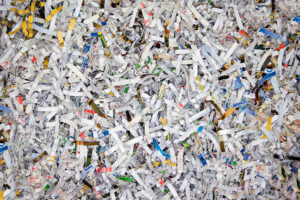In the field of healthcare, the safety of patients and healthcare workers is paramount. One significant aspect of safety involves the proper management of medical sharps, which include needles, syringes, and other sharp objects. Sharps containers play a crucial role in this process, offering a secure means of containment and disposal. In this article, we will delve into the history of sharps containers, exploring their evolution, innovations, and the crucial role they play in modern healthcare.
Early Sharps Disposal (Pre-20th Century)
Before the widespread use of dedicated sharps containers, the disposal of medical sharps was far less organized and often posed significant risks. Sharps were frequently discarded in general waste bins, leaving healthcare workers susceptible to needlestick injuries and infections. This rudimentary disposal method lacked the safety measures necessary to protect both patients and healthcare providers.
Emergence of Dedicated Sharps Containers (20th Century)
The mid-20th century marked a significant shift in sharps disposal practices. Dedicated sharps containers, specifically designed for the safe disposal of medical sharps, began to appear. These early containers were typically made of metal and featured locking mechanisms to prevent accidental access.
Introduction of Disposable Containers (Late 20th Century)
In the late 20th century, disposable sharps containers became the standard in healthcare settings. These containers were typically made of plastic, which offered several advantages over their metal counterparts. Plastic containers were lightweight, cost-effective, and less likely to rust or corrode. Additionally, they were designed for single-use, eliminating the need for sterilization and reuse.
Advancements in Safety Features (Late 20th Century – Early 21st Century)
As awareness of sharps-related injuries grew, sharps container manufacturers began to incorporate advanced safety features. These innovations included:
- Needle Entry Ports: Containers were designed with secure needle entry ports that allowed for safe disposal without manual contact.
- Fill-Level Indicators: Many containers included fill-level indicators to signal when the container was full and needed replacement.
- Temporary and Permanent Closure: Some containers featured temporary and permanent closure mechanisms to prevent unauthorized access.
- Puncture-Resistance: Containers were made puncture-resistant to prevent sharp objects from puncturing the container and causing leaks.
- Color Coding: Color-coded containers helped healthcare workers easily identify the type of waste being disposed of, promoting proper segregation.
Modern Sharps Containers (Present Day)
Today, sharps containers continue to evolve and adapt to the changing healthcare landscape. They are available in various sizes and configurations to accommodate different healthcare settings and volumes of sharps waste. Additionally, some containers are designed to be compatible with automated waste disposal systems, further reducing the risk of sharps-related injuries.
Conclusion
The evolution of sharps containers is a testament to the commitment of healthcare providers to prioritize safety and minimize the risk of needlestick injuries and infections. From rudimentary sharps disposal methods to the introduction of dedicated containers, followed by innovations in safety features, the history of sharps containers reflects a dedication to protecting the well-being of both healthcare workers and patients. In the present day, modern sharps containers continue to provide a secure and efficient means of containing and disposing of medical sharps, ensuring a safer healthcare environment for all.










